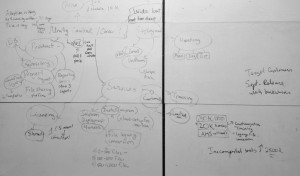Pulling Teeth Made Easier: Adopting New Software Solutions
Share

When I think of software, I often think of my dad. Despite being close to 80, he is well acquainted with software and hardware as he has been using mobile and smartphones, PCs and laptops for 20 years now. He even got an iPad and loves it. But he hates the rapid pace of change and the raft of new functionality and new designs that each successive wave of development brings. To get him to adopt a new UI or process, or a new piece of hardware is like pulling teeth.
It’s not just him, it’s virtually every user and customer I have ever met. Why did they change it? It worked just fine before? Change, whether it be in tools or processes, is almost like an unwanted visit to the dental surgeon, except you don’t get any Percocet with the new tool or process to ease the pain.
Scale Up the Disgruntlement: Enterprise Software Solutions
Now imagine this level of anger and disgruntlement scaled up to a whole organization. How could an entire organization be disgruntled over change? There is a category of software meant to ease the lives of many in business and thereby make those businesses more efficient and therefore more profitable. It’s called enterprise software.
I am the product manager for an enterprise software solution and I can tell you many stories about disgruntled employees who have had the latest greatest solution foisted upon them, thus upsetting their cherished and well-worn routines and process. People aren’t just resistant to change, they get angry when it’s pushed upon them.
I know of a case at a large company where the users actively petitioned against a new version of the software because it would force yet another change in process and more training. To those users, a new solution would have been like yanking out wisdom teeth, without the benefit of laughing gas.
However, organizations need to adapt in order to advance – and software solutions are sometimes the best answer. The key to it all, however, is getting planning and buy-in – not an easy task.
It’s All About the Plan
Human beings love routine and patterns. Our brains naturally look for patterns and routines so we can make sense of things. Since change is usually perceived by most humans as problematic as it breaks the established set of parameters, there really is only one proven way of getting those affected by the change to accept it: Build an adoption plan.
You’re probably saying to yourself: “Great, but that takes time and where do I begin?”
Indeed, it takes time to build a plan, but like most things in life, planning will make the actual roll-out and acceptance much easier. Think of it as directing a play and making adjustments after each rehearsal. You have the overall story, you have the script, you break it down into acts, choose the actors and how you want to stage the play. Then comes show time.
As a best practice, you can build your adoption plan around four major themes:
Prepare for Change
This is the most time-intensive part. You will need to spend time interviewing users to discover and document your own processes, and how they will be affected with the new solution, before, during and after implementation. You’ll need to set timelines for when each phase will happen and who will lead it.
Critical when preparing for change is the development of communications & roll-out plans. Preparing the messages for the different audiences is the foundation for success. When key stakeholders aren’t included, they feel left out and pushed aside. Remember, even if it’s a software solution, you’re dealing with human egos.
By the way, part of the change management plan is ensuring you have a team to support you. This can’t be done by one person alone – you need a sponsor, a project lead and a communications expert to do this. It takes a team to positively influence a team.
Get Buy-In
Like anything in life, if you don’t believe something will help you, it won’t work to its fullest potential, if at all. In the context of an enterprise software solution, you need stakeholders – not just end users – to buy in to the benefits the solution will provide. It’s essential to get an in-house champion, or two, and to get leaders (either by title or by influence) to understand the value and benefits – and to propagate the message.
Search for and ensure buy-in from leaders, power users, people with soft influence. Top-down acceptance is critical because leaders can push through change, but having someone who is respected and listened to is just as important as any VP or executive.
Educate
Education here refers to training end users. Most enterprises loathe spending time on training users, but it’s essential to get that hands-on experience. Additionally training has to be well planned. Make sure you train the specific roles so that you have backup in case power users quit, move on, transfer, etc. Also make sure that you do the training incrementally if time allows it. By getting one group well trained and productive before a solution is rolled out globally, you develop in-house experts who can act as multipliers for a solution.
Document
Sounds obvious – document this whole process, but this aspect is often neglected. By documenting your change plan, the messaging, project charters, the existing and future processes, as well as who the key stakeholders are, will not only serve you for the current roll-out, but in future implementations as well. It will also be your template for any other kind of organizational change that will certainly occur.
Even if you only capture this information in documents and PowerPoints, it’s still a good practice. These documents also become the objective source of truth when there are inevitable questions. If you have a CMS, store the documents there. Either way, document what you did, reuse the materials for the next change when it happens.
There you have it. Don’t pull teeth to get a company to adopt a software solution. Plan for change and ensure you get a higher rate of adoption than just foisting a new software savior on them with some training. You may even enjoy the process.
- Cleared for Takeoff: Private Networks in Aviation - January 21, 2025
- A Tour of iBwave Viewer - November 23, 2020
- Introducing Augmented Reality in iBwave Wi-Fi Mobile - September 10, 2020



























